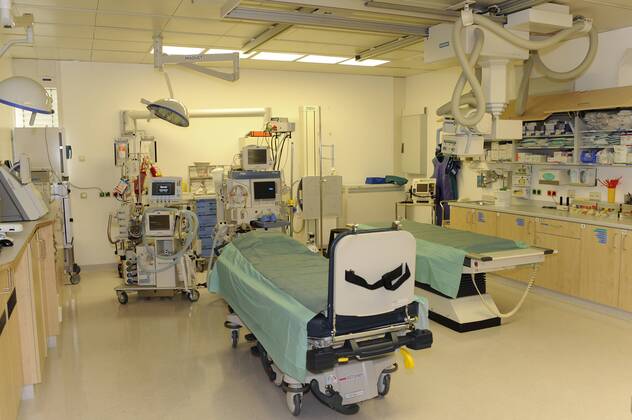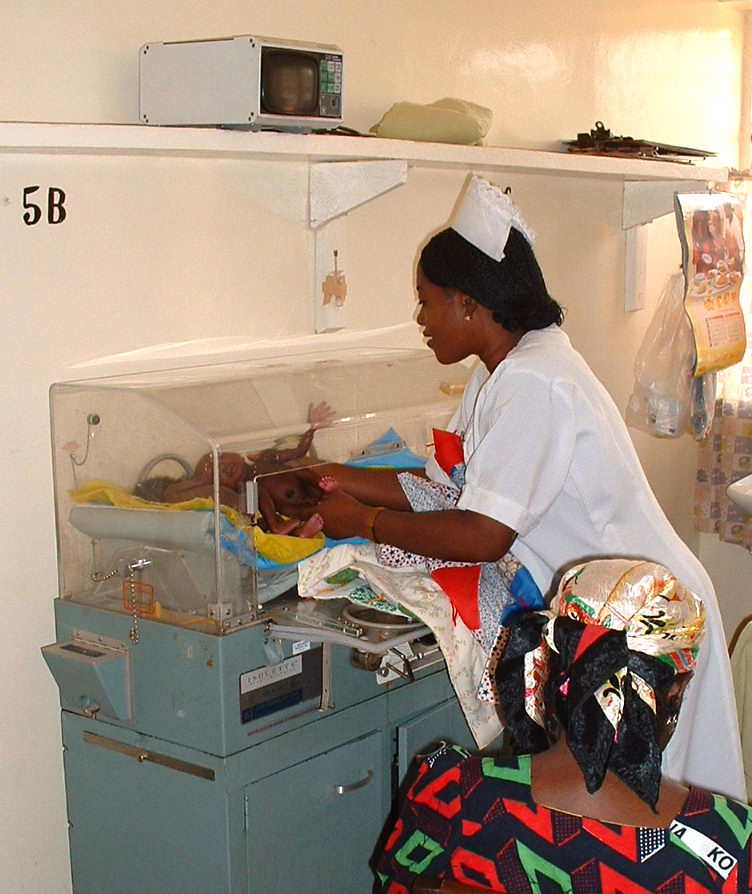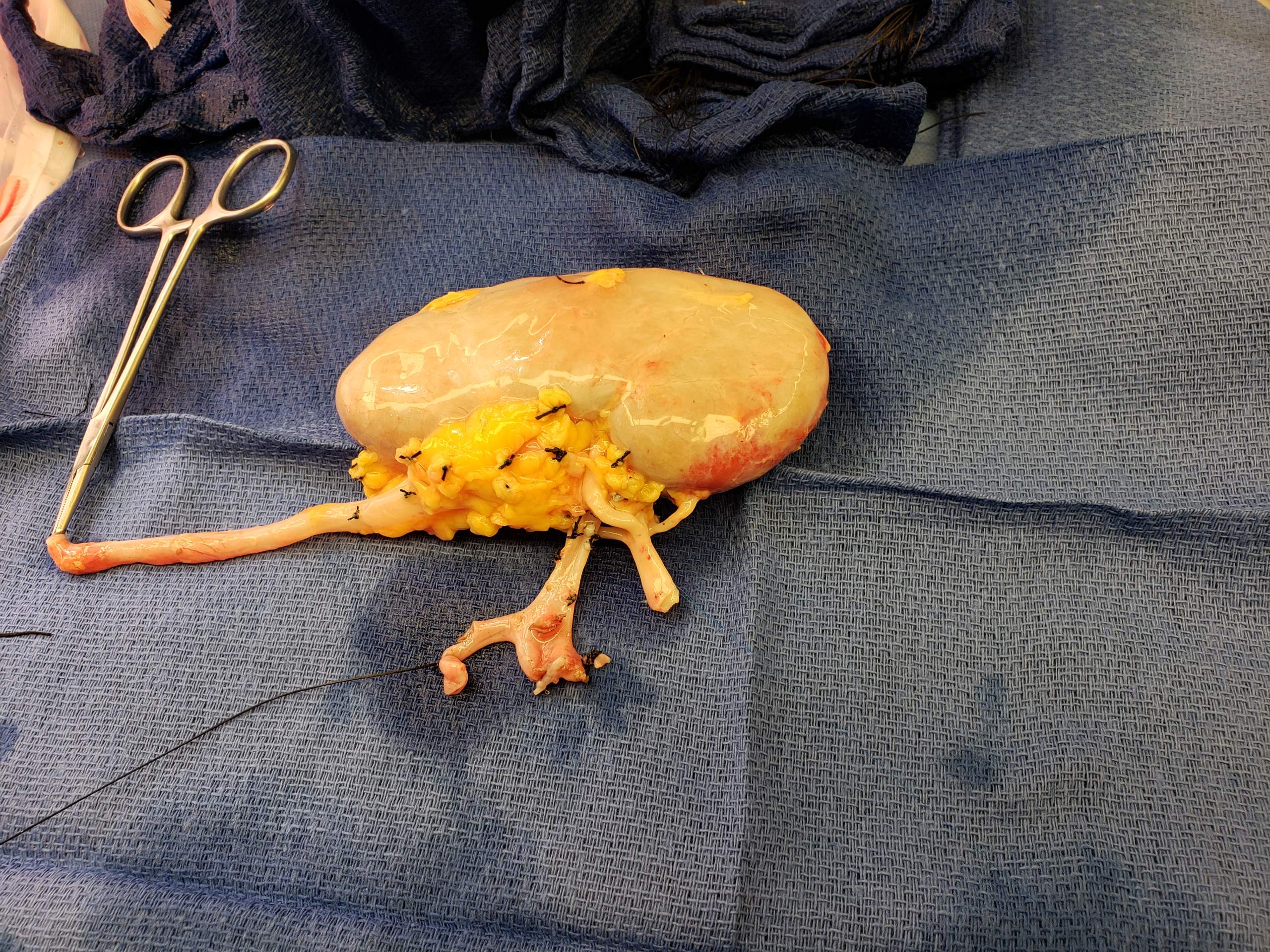|
Iowa Methodist Medical Center
Iowa Methodist Medical Center is a non-profit, 370-bed hospital in Des Moines, Iowa owned and operated by UnityPoint Health. History Iowa Methodist Medical Center originally opened on January 16, 1901, as Iowa Methodist Hospital, a 30-bed hospital on the former site of Callanan College. In 1956, the hospital performed the first open-heart procedure outside of the Mayo Clinic and also built the first radiation therapy department in Des Moines. Iowa Methodist began operating Life Flight, an air ambulance service, in 1979. The John Stoddard Cancer Center opened in the early 1990s, combining full radiation, oncology, and associated treatments into a single location. Facilities The hospital is home to the William C. Knapp Emergency Department and Trauma Center, an American College of Surgeons-verified Level I trauma center and Level II pediatric trauma center. The hospital houses the Blank Children's Hospital, which contains a pediatric intensive care unit (PICU) and a level III ... [...More Info...] [...Related Items...] OR: [Wikipedia] [Google] [Baidu] |
UnityPoint Health
UnityPoint Health (known as Iowa Health System until 2013) is a network of hospitals, clinics and home care services in Iowa, Illinois and Wisconsin. The system began in 1993, when Iowa Lutheran Hospital and Iowa Methodist Hospital in Des Moines merged, forming the state's largest provider of hospital and related health services. The organization grew to encompass eight metropolitan areas and changed its name in 2013 to reflect that it was no longer exclusive to Iowa. In 2022, UnityPoint Health spun off Methodist, Proctor and Pekin hospitals in Peoria, IL, to nonprofit Carle Health. https://www.fiercehealthcare.com/providers/unitypoint-health-signs-deal-handing-over-its-central-illnois-network-carle-health Hospitals See also * Hospital network A hospital network is a public, non-profit or for-profit company or organization that provides two or more hospitals and other broad healthcare facilities and services. A hospital network may include hospitals in one or more regions ... [...More Info...] [...Related Items...] OR: [Wikipedia] [Google] [Baidu] |
Des Moines, Iowa
Des Moines () is the capital and the most populous city in the U.S. state of Iowa. It is also the county seat of Polk County. A small part of the city extends into Warren County. It was incorporated on September 22, 1851, as Fort Des Moines, which was shortened to "Des Moines" in 1857. It is located on, and named after, the Des Moines River, which likely was adapted from the early French name, ''Rivière des Moines,'' meaning "River of the Monks". The city's population was 214,133 as of the 2020 census. The six-county metropolitan area is ranked 83rd in terms of population in the United States with 699,292 residents according to the 2019 estimate by the United States Census Bureau, and is the largest metropolitan area fully located within the state. Des Moines is a major center of the US insurance industry and has a sizable financial services and publishing business base. The city was credited as the "number one spot for U.S. insurance companies" in a ''Business Wire'' articl ... [...More Info...] [...Related Items...] OR: [Wikipedia] [Google] [Baidu] |
John Stoddard Cancer Center
{{coord, 41.590100, -93.635054, display=title John Stoddard Cancer Center is a cancer care center located in Central Iowa. It was the first cancer center in that location. The John Stoddard Cancer Center is a part of Iowa Health-Des Moines, where a number of important treatment options and services originated. History Iowa’s first children’s cancer center opened at Blank Children’s Hospital in 1987, concentrating on all phases of pediatric cancer diagnosis and treatment in one area. Expanding upon that concept in 1991, the John Stoddard Cancer Center opened at the Iowa Methodist Medical Center. It was the first cancer center in central Iowa to house all radiation oncology and ancillary services in one location. The new facility centralized all outpatient oncology services in one area while locating them by the inpatient services offered at Iowa Methodist Medical Center. In 1962, Iowa Methodist Medical Center established Iowa’s first hospital-based radiation oncology d ... [...More Info...] [...Related Items...] OR: [Wikipedia] [Google] [Baidu] |
American College Of Surgeons
The American College of Surgeons is an educational association of surgeons created in 1913.American College of Surgeons Online "What is the American College of Surgeons?"/ref> See also *American College of Physicians The American College of Physicians (ACP) is a national organization of internists, who specialize in the diagnosis, treatment, and care of adults.Sokanu "What is an Internist?" Retrieved October 20, 2014 With 161,000 members, ACP is the largest ... References External links *ACS Foundation [...More Info...] [...Related Items...] OR: [Wikipedia] [Google] [Baidu] |
Level I Trauma Center
A trauma center (or trauma centre) is a hospital equipped and staffed to provide care for patients suffering from major traumatic injuries such as falls, motor vehicle collisions, or gunshot wounds. A trauma center may also refer to an emergency department (also known as a "casualty department" or "accident and emergency") without the presence of specialized services to care for victims of major trauma. In the United States, a hospital can receive trauma center status by meeting specific criteria established by the American College of Surgeons (ACS) and passing a site review by the Verification Review Committee. Official designation as a trauma center is determined by individual state law provisions. Trauma centers vary in their specific capabilities and are identified by "Level" designation: Level I (Level-1) being the highest and Level III (Level-3) being the lowest (some states have five designated levels, in which case Level V (Level-5) is the lowest). The highest levels of ... [...More Info...] [...Related Items...] OR: [Wikipedia] [Google] [Baidu] |
Pediatric Intensive Care Unit
A pediatric intensive care unit (also paediatric), usually abbreviated to PICU (), is an area within a hospital specializing in the care of critically ill infants, children, teenagers, and young adults aged 0-21. A PICU is typically directed by one or more pediatric intensivists or PICU consultants and staffed by doctors, nurses, and respiratory therapists who are specially trained and experienced in pediatric intensive care. The unit may also have nurse practitioners, physician assistants, physiotherapists, social workers, child life specialists, and clerks on staff, although this varies widely depending on geographic location. The ratio of professionals to patients is generally higher than in other areas of the hospital, reflecting the acuity of PICU patients and the risk of life-threatening complications. Complex technology and equipment is often in use, particularly mechanical ventilators and patient monitoring systems. Consequently, PICUs have a larger operating budget t ... [...More Info...] [...Related Items...] OR: [Wikipedia] [Google] [Baidu] |
Neonatal Intensive Care Unit
A neonatal intensive care unit (NICU), also known as an intensive care nursery (ICN), is an intensive care unit (ICU) specializing in the care of ill or premature newborn infants. Neonatal refers to the first 28 days of life. Neonatal care, as known as specialized nurseries or intensive care, has been around since the 1960s. The first American newborn intensive care unit, designed by Louis Gluck, was opened in October 1960 at Yale New Haven Hospital. NICU is typically directed by one or more neonatologists and staffed by resident physicians, nurses, nurse practitioners, pharmacists, physician assistants, respiratory therapists, and dietitians. Many other ancillary disciplines and specialists are available at larger units. The term ''neonatal'' comes from ''neo'', "new", and ''natal'', "pertaining to birth or origin". Nursing and neonatal populations Healthcare institutions have varying entry-level requirements for neonatal nurses. Neonatal nurses are registered nurses (RNs ... [...More Info...] [...Related Items...] OR: [Wikipedia] [Google] [Baidu] |
Kidney Transplant
Kidney transplant or renal transplant is the organ transplant of a kidney into a patient with end-stage kidney disease (ESRD). Kidney transplant is typically classified as deceased-donor (formerly known as cadaveric) or living-donor transplantation depending on the source of the donor organ. Living-donor kidney transplants are further characterized as genetically related (living-related) or non-related (living-unrelated) transplants, depending on whether a biological relationship exists between the donor and recipient. Before receiving a kidney transplant, a person with ESRD must undergo a thorough medical evaluation to make sure that they are healthy enough to undergo transplant surgery. If they are deemed a good candidate, they can be placed on a waiting list to receive a kidney from a deceased donor. Once they are placed on the waiting list, they can receive a new kidney very quickly, or they may have to wait many years; in the United States, the average waiting time is three t ... [...More Info...] [...Related Items...] OR: [Wikipedia] [Google] [Baidu] |
Hospitals In Iowa
A hospital is a health care institution providing patient treatment with specialized health science and auxiliary healthcare staff and medical equipment. The best-known type of hospital is the general hospital, which typically has an emergency department to treat urgent health problems ranging from fire and accident victims to a sudden illness. A district hospital typically is the major health care facility in its region, with many beds for intensive care and additional beds for patients who need long-term care. Specialized hospitals include trauma centers, rehabilitation hospitals, children's hospitals, seniors' (geriatric) hospitals, and hospitals for dealing with specific medical needs such as psychiatric treatment (see psychiatric hospital) and certain disease categories. Specialized hospitals can help reduce health care costs compared to general hospitals. Hospitals are classified as general, specialty, or government depending on the sources of income received. A teaching ... [...More Info...] [...Related Items...] OR: [Wikipedia] [Google] [Baidu] |
Hospitals Established In 1901
A hospital is a health care institution providing patient treatment with specialized health science and auxiliary healthcare staff and medical equipment. The best-known type of hospital is the general hospital, which typically has an emergency department to treat urgent health problems ranging from fire and accident victims to a sudden illness. A district hospital typically is the major health care facility in its region, with many beds for intensive care and additional beds for patients who need long-term care. Specialized hospitals include trauma centers, rehabilitation hospitals, children's hospitals, seniors' (geriatric) hospitals, and hospitals for dealing with specific medical needs such as psychiatric treatment (see psychiatric hospital) and certain disease categories. Specialized hospitals can help reduce health care costs compared to general hospitals. Hospitals are classified as general, specialty, or government depending on the sources of income received. A teaching ... [...More Info...] [...Related Items...] OR: [Wikipedia] [Google] [Baidu] |




